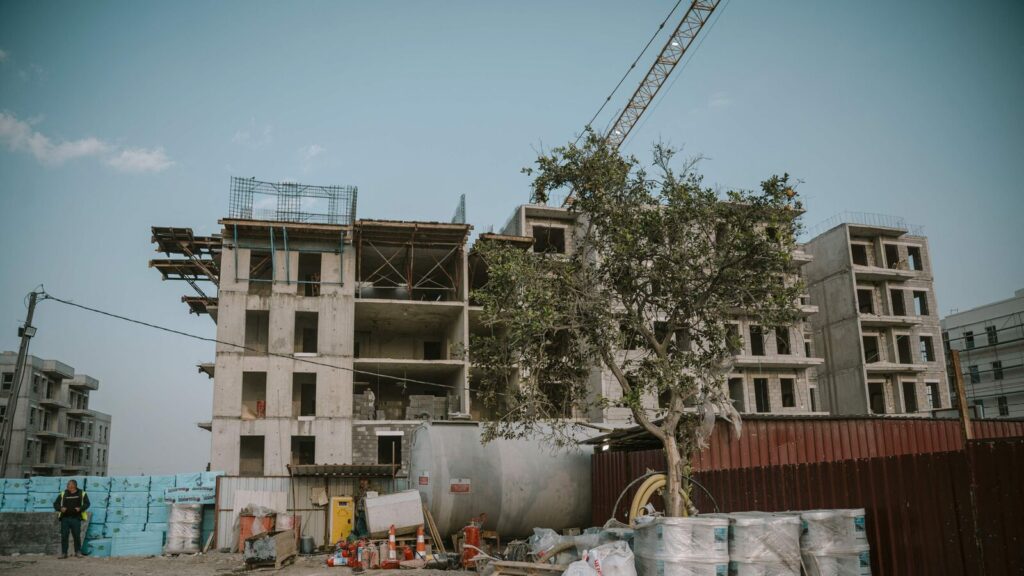The 4.0-magnitude earthquake in Delhi early Monday (February 17) wasn’t mild. It “scared the life out of” many in the national capital. “Whole building shook for 5 seconds in Janakpuri…,” a social media user shared her ordeal in a post on X, while another described tremors as “a strong jolt like explosion.” A user also raised alarm, saying these tremors were “scary and the closest warning sign to revamp the city for being earthquake resistant.”
Is Delhi prepared for severe earthquakes? What’s the condition of buildings and infrastructure in Delhi NCR right now?
These concerns mounted as Delhi is prone to severe earthquake damage. “Delhi is prone not only to damaging earthquakes in or near Delhi, but due to its peculiar geological setting it could also sustain strong shaking due to a large earthquake in the Himalayas,” the Delhi Disaster Management Authority (DDMA) says on its website.
Even though Delhi is among the high-risk areas, the DDMA says, “Most buildings in Delhi may not meet Indian standards on seismic constructions and may be considered deficient from a seismic safety viewpoint.”
“There is a real potential for a great earthquake disaster in Delhi, the implications of which go well beyond casualties because of its political and commercial significance,” the DDMA website reads.
Where does the problem lie?
Anubrotto Kumar (Dunu) Roy, Director of the Hazards Centre (New Delhi), said the condition of buildings and infrastructure in Delhi-NCR is “very poor” right now.
He added that nobody pays attention to basic principles (of building) because of two reasons. First, there has not been a severe earthquake in Delhi.
“Delhi, until 1990s, was a low-rise-high density city — this means there was a crowd but buildings never went up. It was mostly two-three stories…now we have tall building right in the centre,” said Dunu Roy.
The second reason Roy mentioned is that there are build-up housing and colonies which are somewhat stable because they don’t go to high up…they are relatively closer to house, and so they are structurally a little more safe.”
However, Roy said a majority of the population in Delhi does not live in authorised colonies. Many live in buildings that do not have NOCs.
He held the Delhi Development Authority (DDA) responsible for the rising number of unauthorised houses and colonies. “If DDA doesn’t build [adequate number of] houses, what are 3 million people going to do,” he said.
Meanwhile, Anil Bansal said weak enforcement of safety regulations has left many buildings — especially in densely populated areas — non-compliant with seismic safety standards.
He said a significant concern is the unauthorised colonies and slums, “where millions live in structurally weak buildings that do not adhere to construction norms.”
“These areas face heightened risks due to poor planning, lack of engineering oversight, and overcrowding,” Anil Bansal said.
Delhi earthquake: What can help?
Roy said, “You cannot prevent buildings from toppling over during severe earthquakes. It will be foolish to attempt to do so.”
“The principle is that you make them as safe as possible so that even if the parts of them crumble, they should crumble in a fashion that does not harm people. The idea is, it should not crack inwards onto occupants…it should crumble outwards so that people in the building are safe,” Roy explained.
He further added that the simple and technical solutions to the problem are “triangulation” and “Retrofitting” of the existing houses. Triangulation is a building technique that uses triangular shapes to create stable structures. Retrofitting refers to the process of improving or repairing an existing structure.
There’s also a need for “decentralized emergency response systems”, Roy said, while explaining that there must be a disaster response system (equipment for disaster response system with trained people) at every 100th house.
Meanwhile, Anil Bansal said, “To strengthen earthquake resilience, Delhi must enforce building codes rigorously, retrofit critical infrastructure, and introduce cost-effective solutions for reinforcing structures in informal settlements.”
“Disaster preparedness programs should be expanded at the community level to ensure grassroots awareness and response capability. Collaboration among urban planners, policymakers, and local communities is also crucial for integrating safety measures into urban development plans,” Bansal said.
He added, “Delhi possesses the necessary policies and frameworks to mitigate seismic risks, but their effectiveness depends on urgent and sustained action. Strong political will, coordinated efforts, and public participation are essential to preventing a future catastrophe.”
“The recent tremors serve as a wake-up call—Delhi must act now before a major disaster strikes,” Bansal said.
Catch all the Business News , Breaking News Events and Latest News Updates on Live Mint. Download The Mint News App to get Daily Market Updates.
MoreLess
Source:https://www.livemint.com/news/india/delhi-cant-handle-a-great-earthquake-disaster-where-does-the-problem-lie-11739811936442.html

